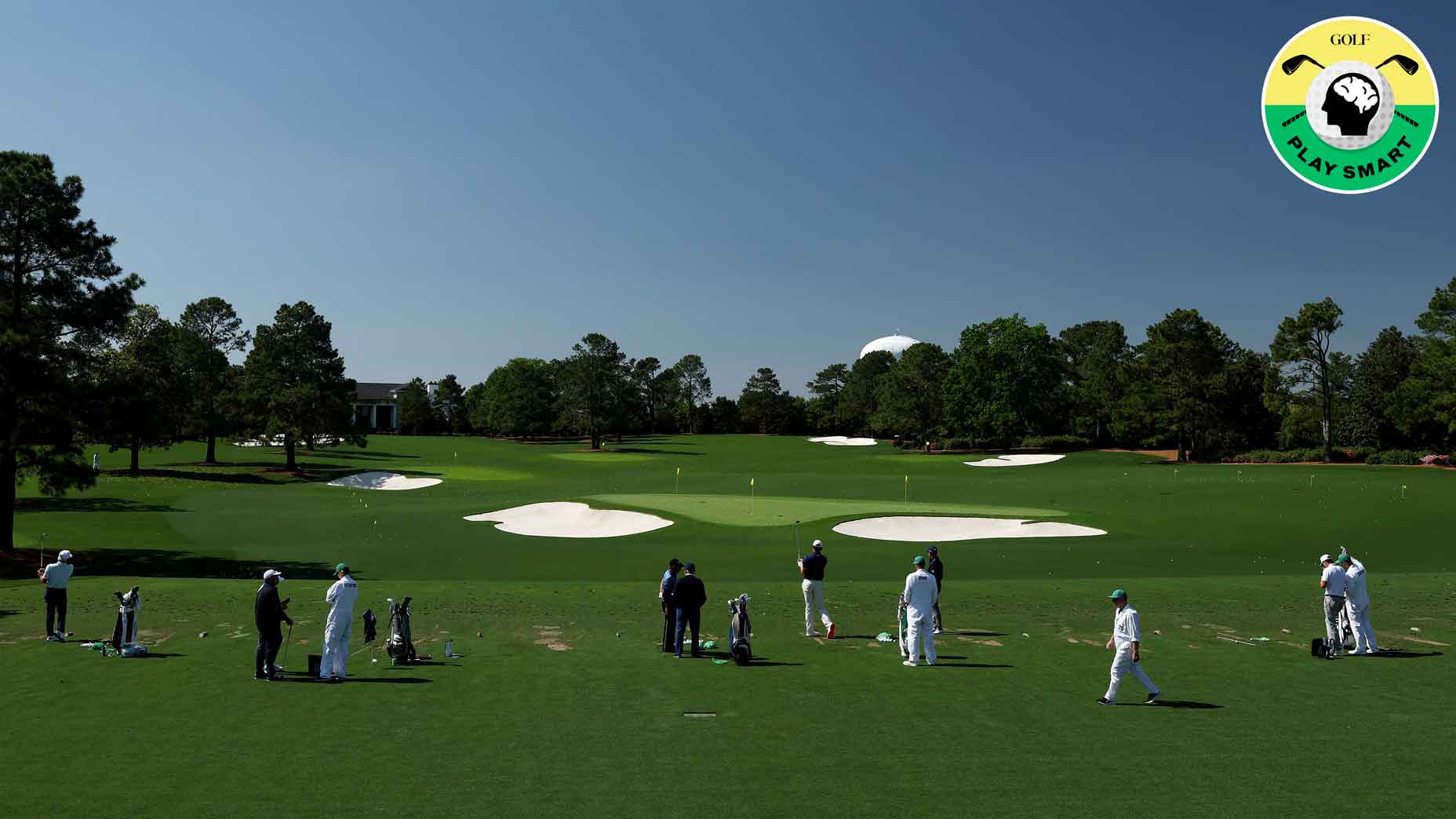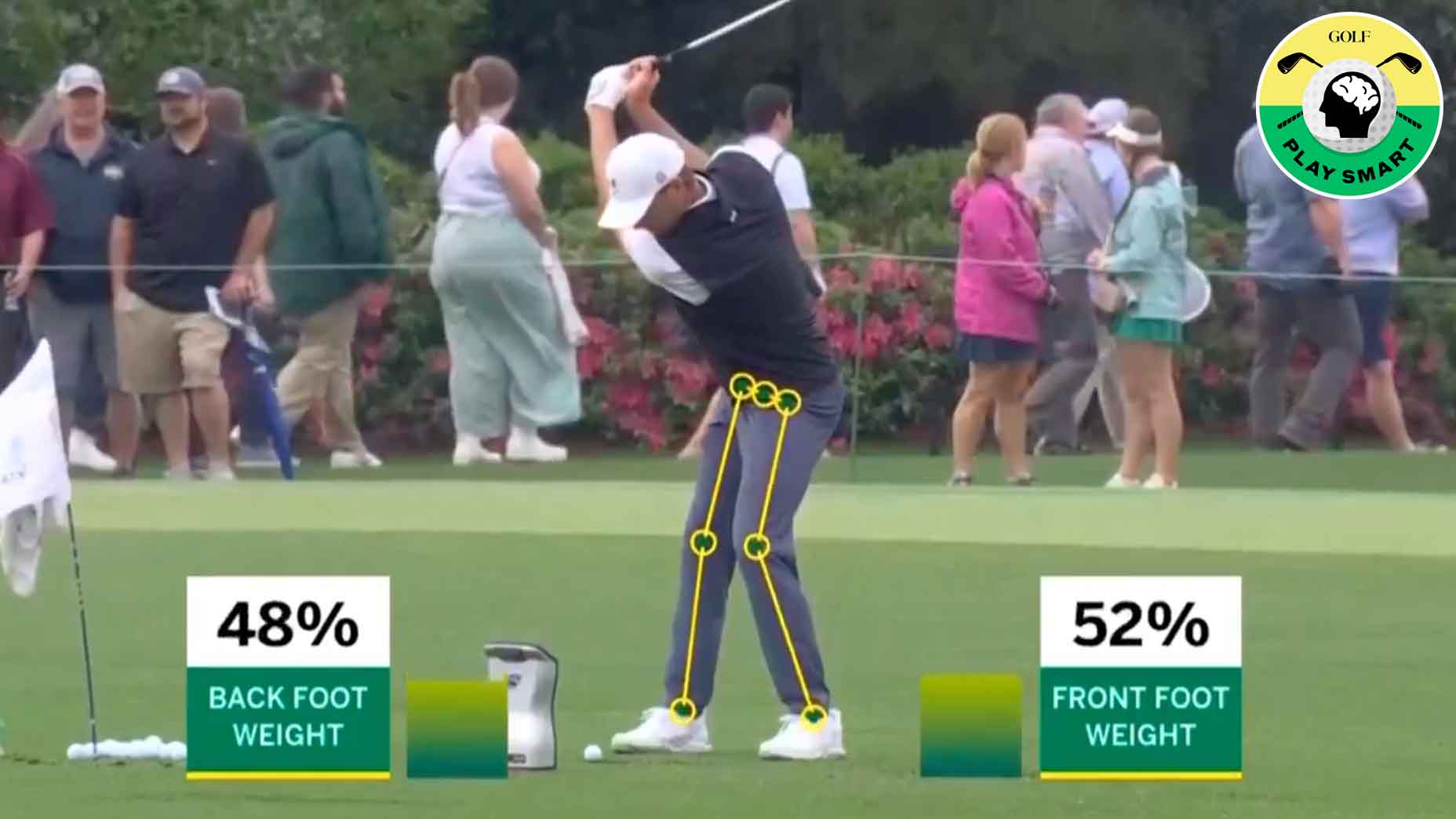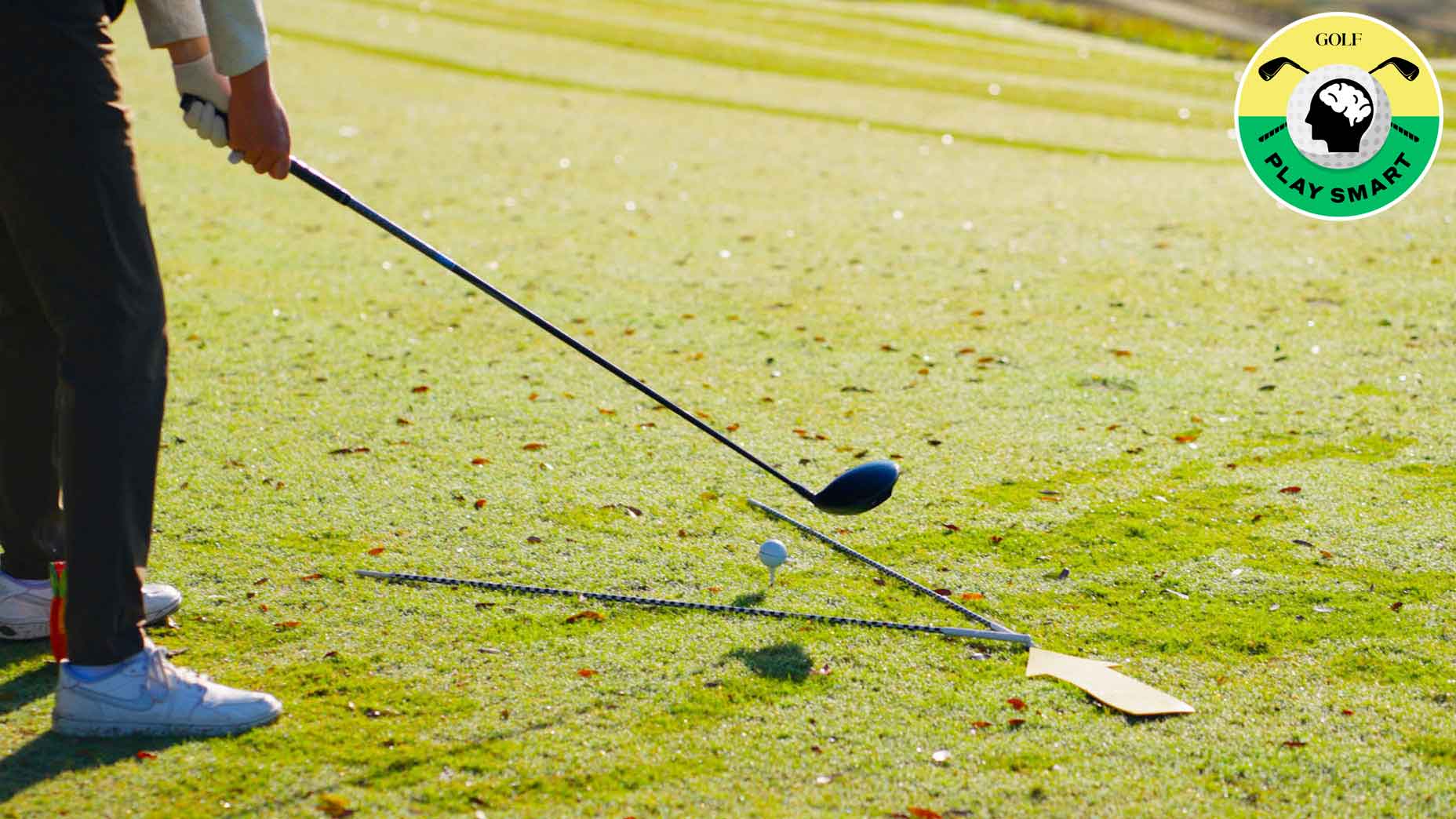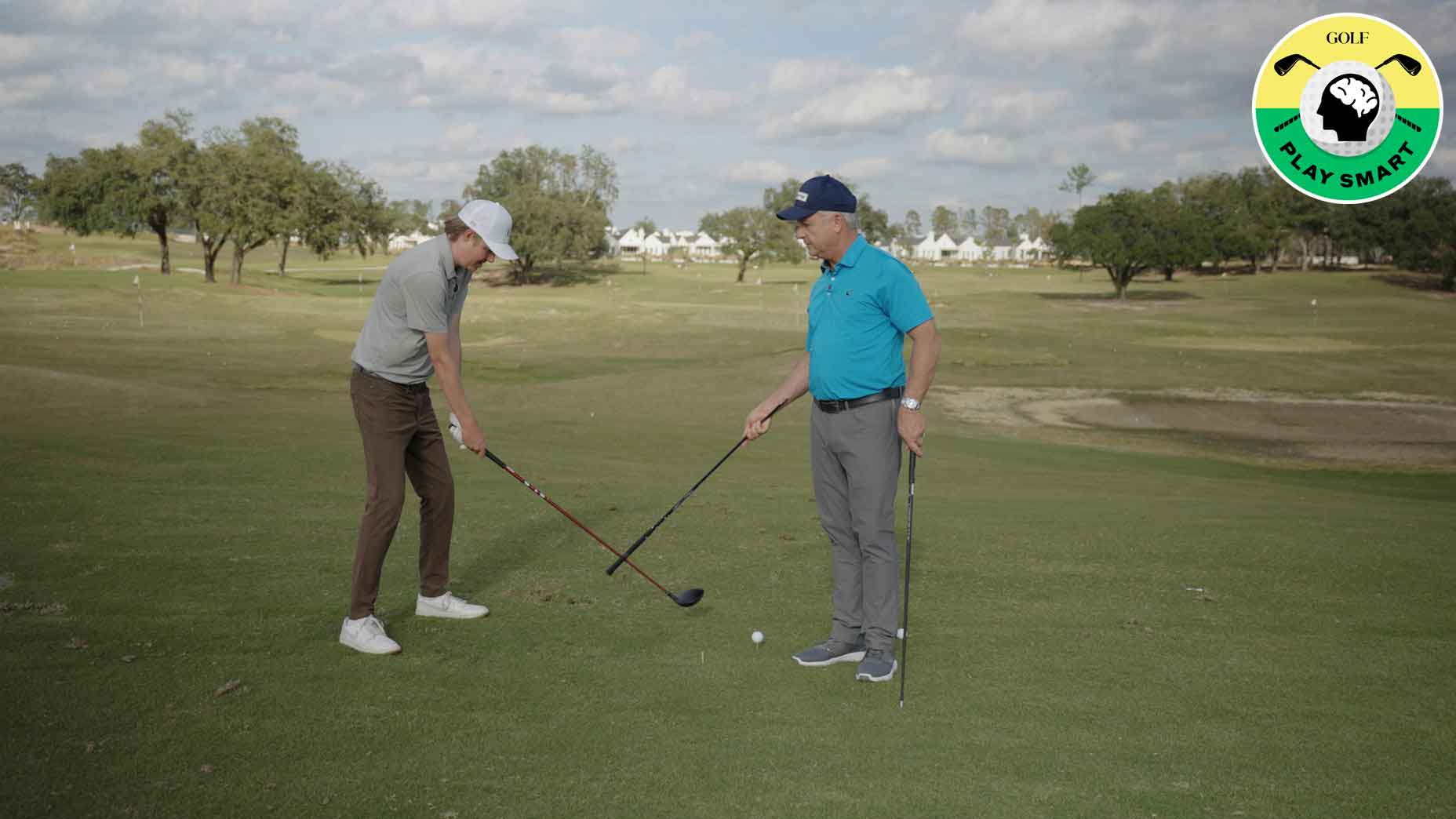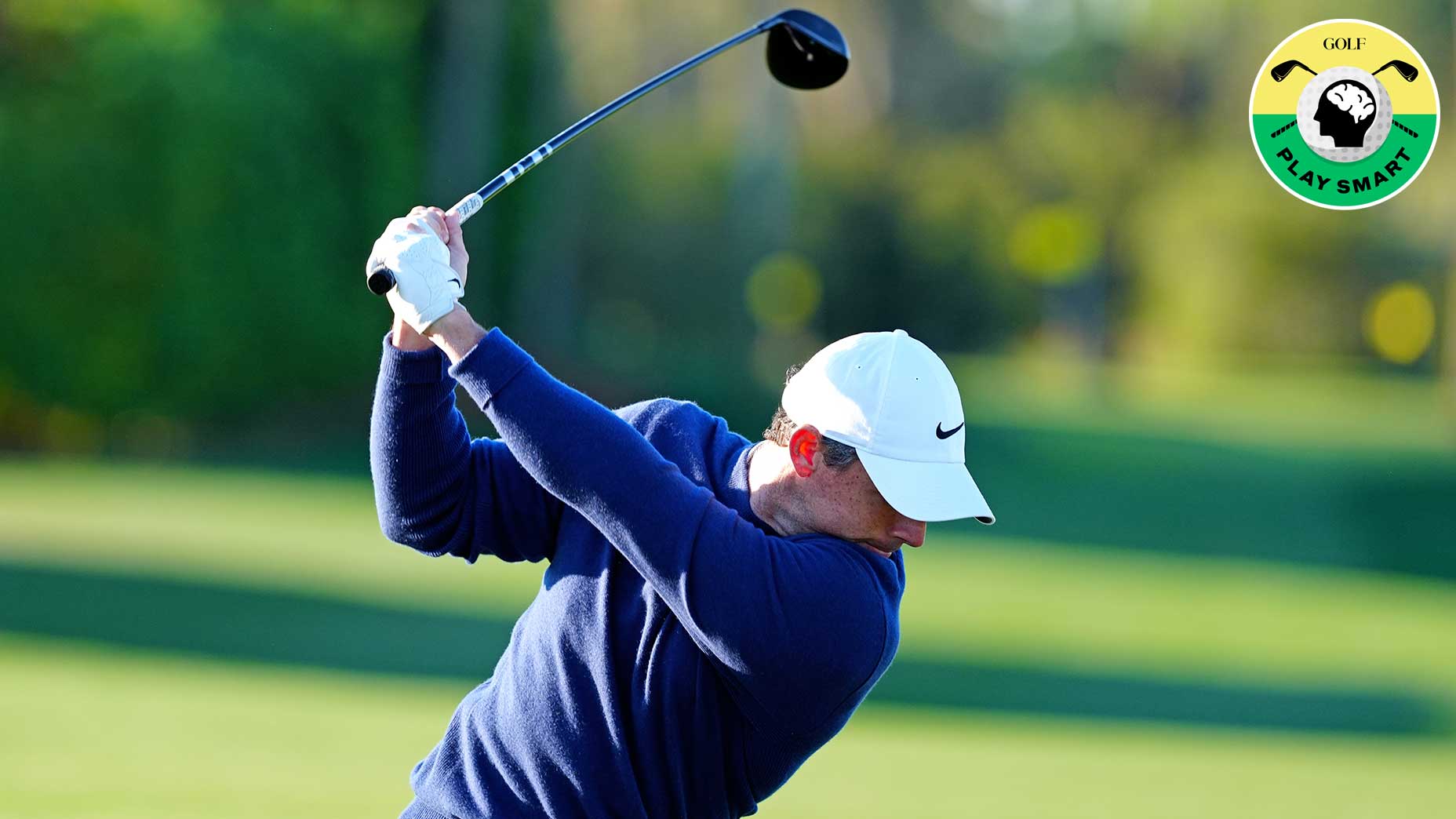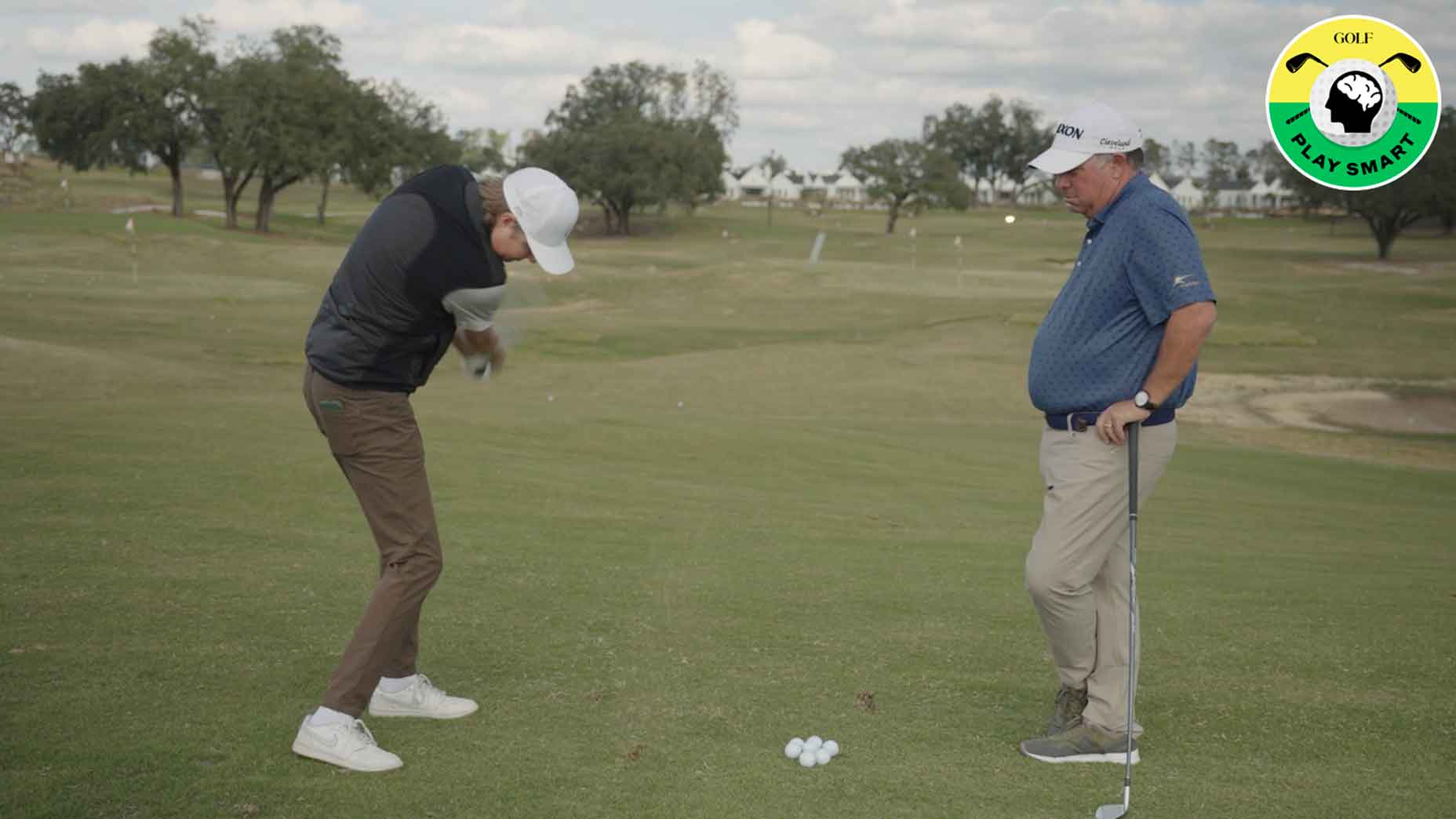This common flaw is hurting your golf swing, according to Max Homa
- Share on Facebook
- Share on Twitter
- Share by Email
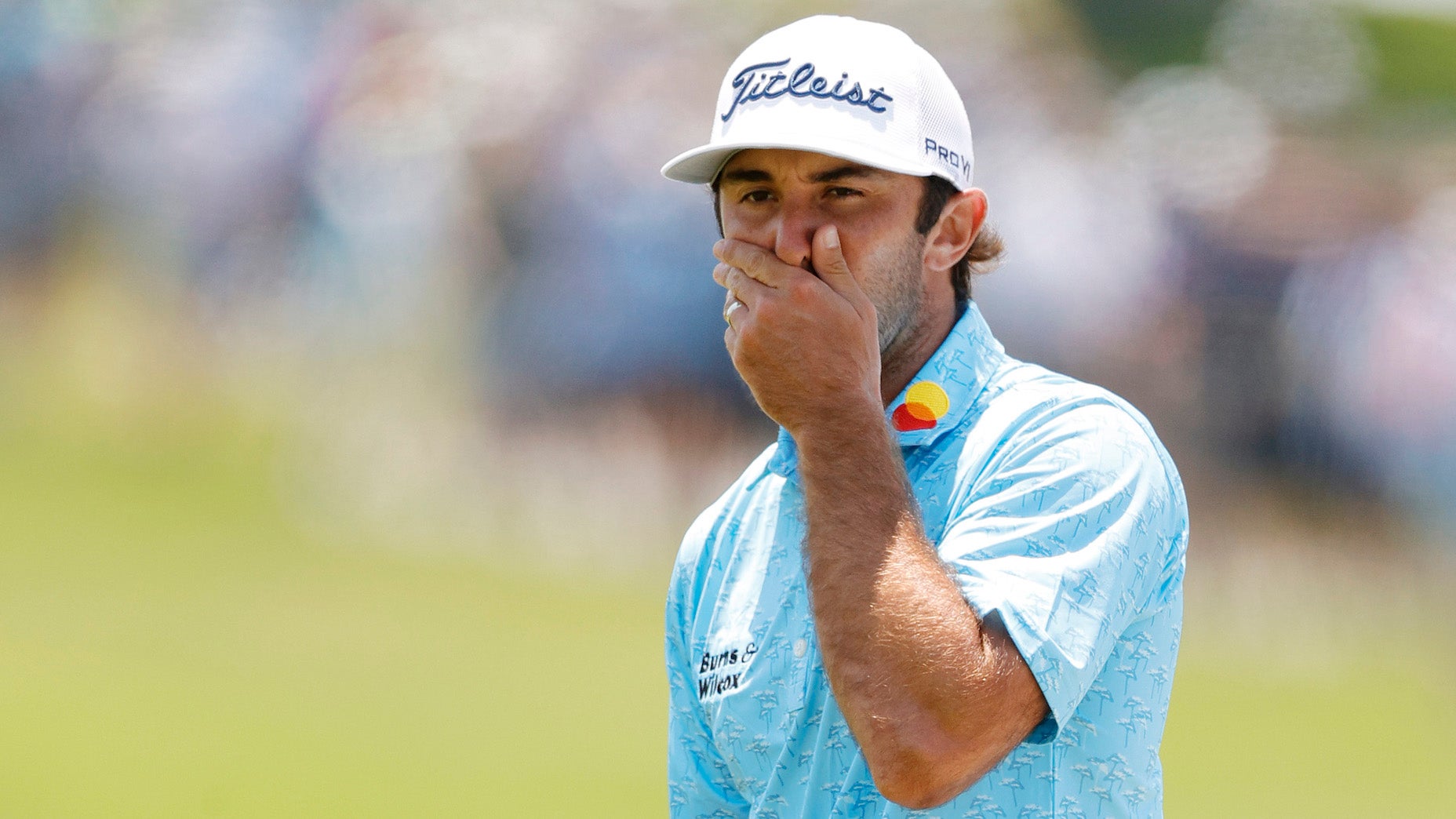
Golfers who lack decent range of motion will struggle with consistency and distance.
Getty Images
Welcome to Play Smart, a game-improvement column that drops every Monday, Wednesday and Friday from Game Improvement Editor Luke Kerr-Dineen to help you play smarter, better golf.
Max Homa does a lot of things well, but perhaps nothing better than his ability to roast golf swings on Twitter. He’s been doing it for quite some time now, and each analysis is better than the last — though this one was particularly hilarious.
This looks like if Jon Rahm’s swing got addicted to hard drugs https://t.co/68ylE2QxTE
— max homa (@Maxhoma) April 8, 2020
It’s all in good fun, of course, and Homa says he enjoys doing it because of his genuine love for the recreational level of the game.
That was actually the impetus behind his new partnership with Gillette, which is launching a “72 club” to honor any team of golfers who shoot 72 (or better) on the Nextgengolf City Tour. The 72 club is named for the 72 hours of sweat protection Gillett’s deodorant guarantees — “You don’t want to smell bad,” Homa says. “It sounds simple, but as golfers, you’re on the course for a long time” — and at the heart if it, it provides amateur golfers a goal to strive for.
“It’s a really cool way of providing opportunity for people who love golf and want to play more,” he says. “I’m fortunate enough to have tournaments set up for me every week. That’s not the case for everyone, and to help give people a reason to improve and ignite that competitive fire is really awesome.”
But it’s not just about the thrill of competing, it’s about the joy of improving along the way. Which brings us back to Homa’s swing-roasting. He gets a lot of golf swings tweeted at him on a daily basis, so I asked him — jokes aside — about the most common flaws he sees popping up in golfers’ swings. Here’s what he had to say.
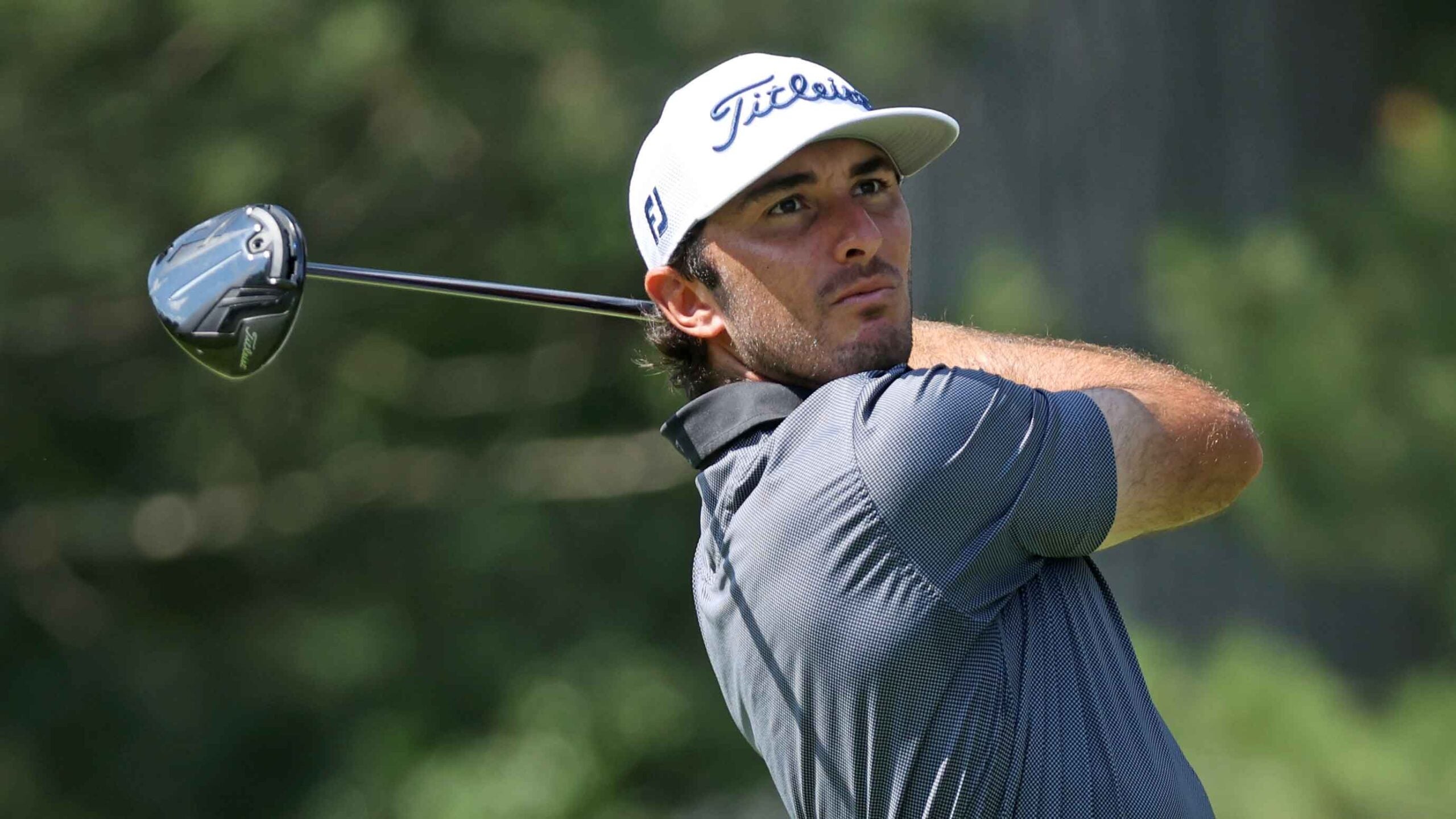
Why bad range of motion is hurting your swing
Your body’s range of motion is, in simplest terms, its ability to move in one direction until it can’t anymore. Hold your arm out in front of you with your palm facing the floor, then twist it toward the sky; how much you can move it is that joint’s range of motion.
Professional golfers, as you might expect, generally have really good range of motion. Their hips are super mobile, their wrists can do all sorts of things, and they’re working on getting better all the time. Because most recreational golfers are busy doing lots of other things on a daily basis, like sitting in front of a laptop, their range of motion often suffers. And therein lies the problem, Max says.
“Range of motion is a big deal,” Homa says. “I’ve noticed golf swings get really, really short. It’s nobody’s fault, that’s just where your backswing goes to.”
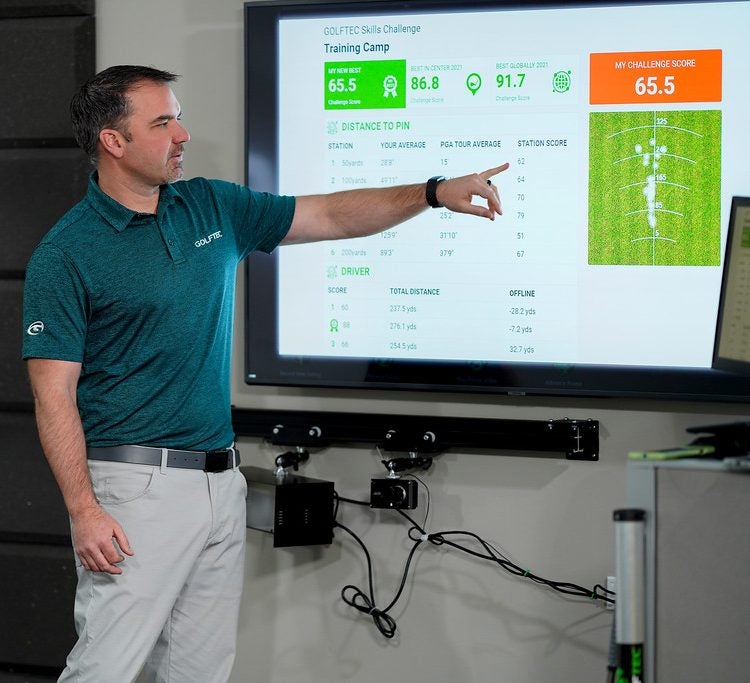
Swing Evaluation for GOLF.com Readers
A bad range of motion can create all sorts of problems, Homa says. It’ll cost you distance because it’ll be harder to maintain balance, which will affect your consistency. Worse yet, it can create technical flaws in your golf swing.
“The most common problem I see in the golf swing is golfers sucking the clubhead way inside on the backswing, then coming over the top and hit a big slice,” Homa says.
So, what’s Homa’s advice?
First, he wants to make clear that there’s no one perfect swing all golfers should strive for.
“There are so many different ways to do it, there’s no blueprint, even on tour, there’s no right or wrong,” Homa says.
But moreover, Homa says it’s about finding a good coach, identifying what your body can and can’t do, then putting together a plan to improve the areas of your body that need work. Once you do that, you’ll find making a powerful, repeatable golf swing is simply easier.
“Dustin Johnson can swing the way he swings because his body allows him to do that. I can’t quite do that at the moment,” Homa says, explaining that getting his hands high on the backswing is an area where he’s trying to get more flexible. “Not all of us have perfect range of motion. I have a whole list of correctives I work on every day to open up different areas of my body.”
Ultimately, Homa says, it’s about making sure you have a plan to improve your flexibility, mobility and stability, and improving those physical qualities that will make the act of swinging a golf club easier, even if that means putting the clubs down in the meantime.
“It would almost benefit to stretch a little bit more instead of going to the range,” he says.
Latest In Instruction
Augusta National's 10 toughest shots, ranked

Luke Kerr-Dineen
Golf.com Contributor
Luke Kerr-Dineen is the Game Improvement Editor at GOLF Magazine and GOLF.com. In his role he oversees the brand’s game improvement content spanning instruction, equipment, health and fitness, across all of GOLF’s multimedia platforms.
An alumni of the International Junior Golf Academy and the University of South Carolina–Beaufort golf team, where he helped them to No. 1 in the national NAIA rankings, Luke moved to New York in 2012 to pursue his Masters degree in Journalism from Columbia University. His work has also appeared in USA Today, Golf Digest, Newsweek and The Daily Beast.

